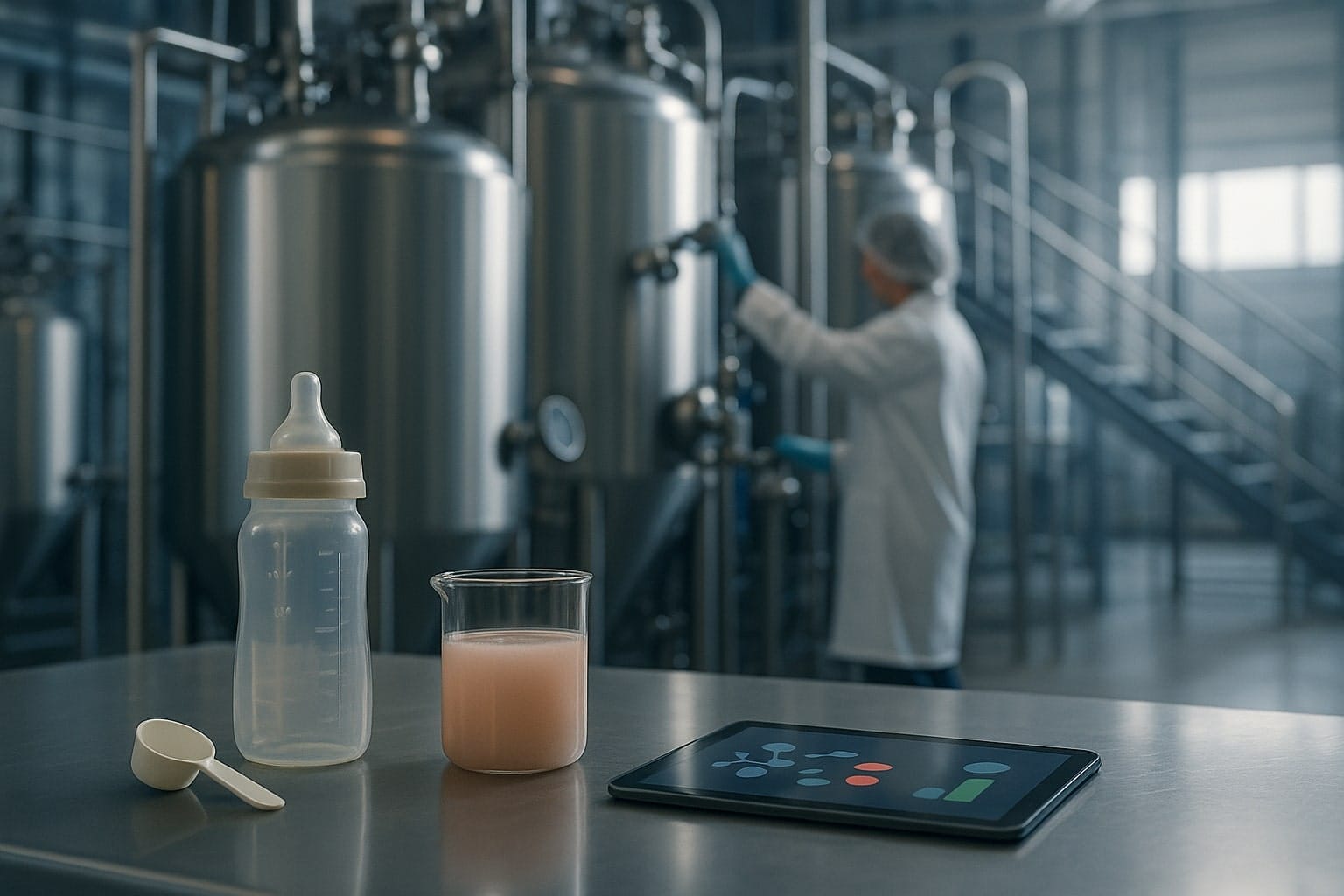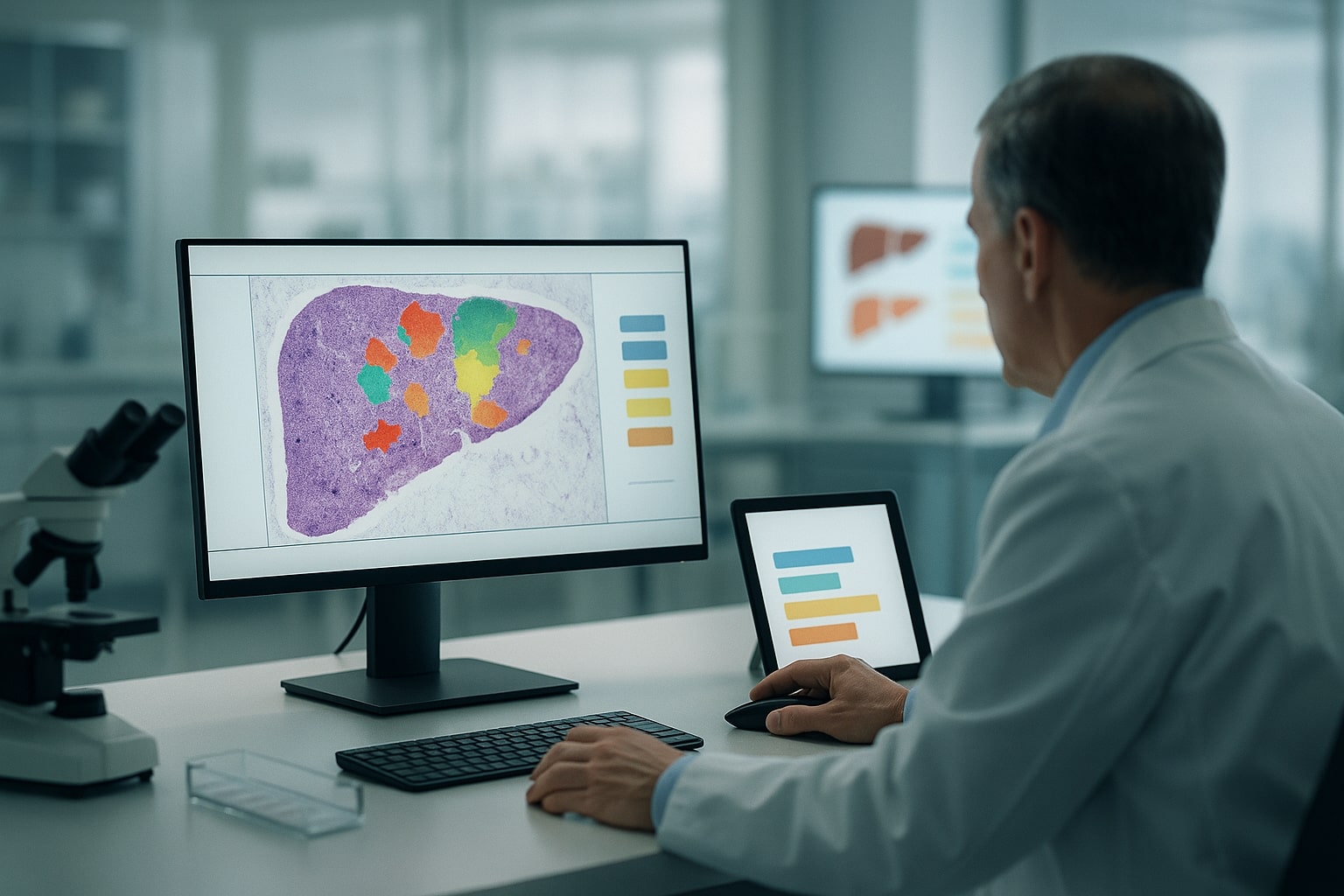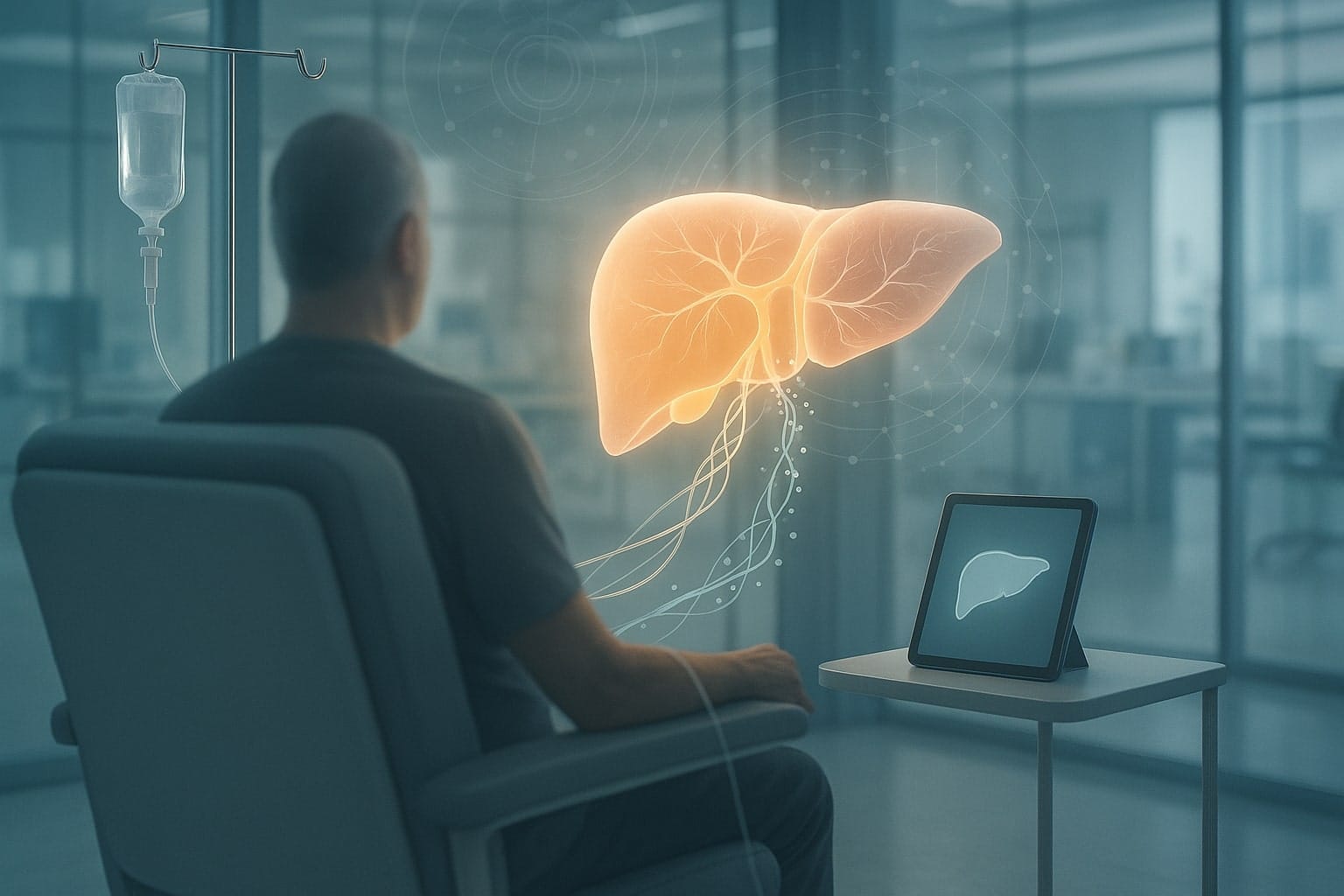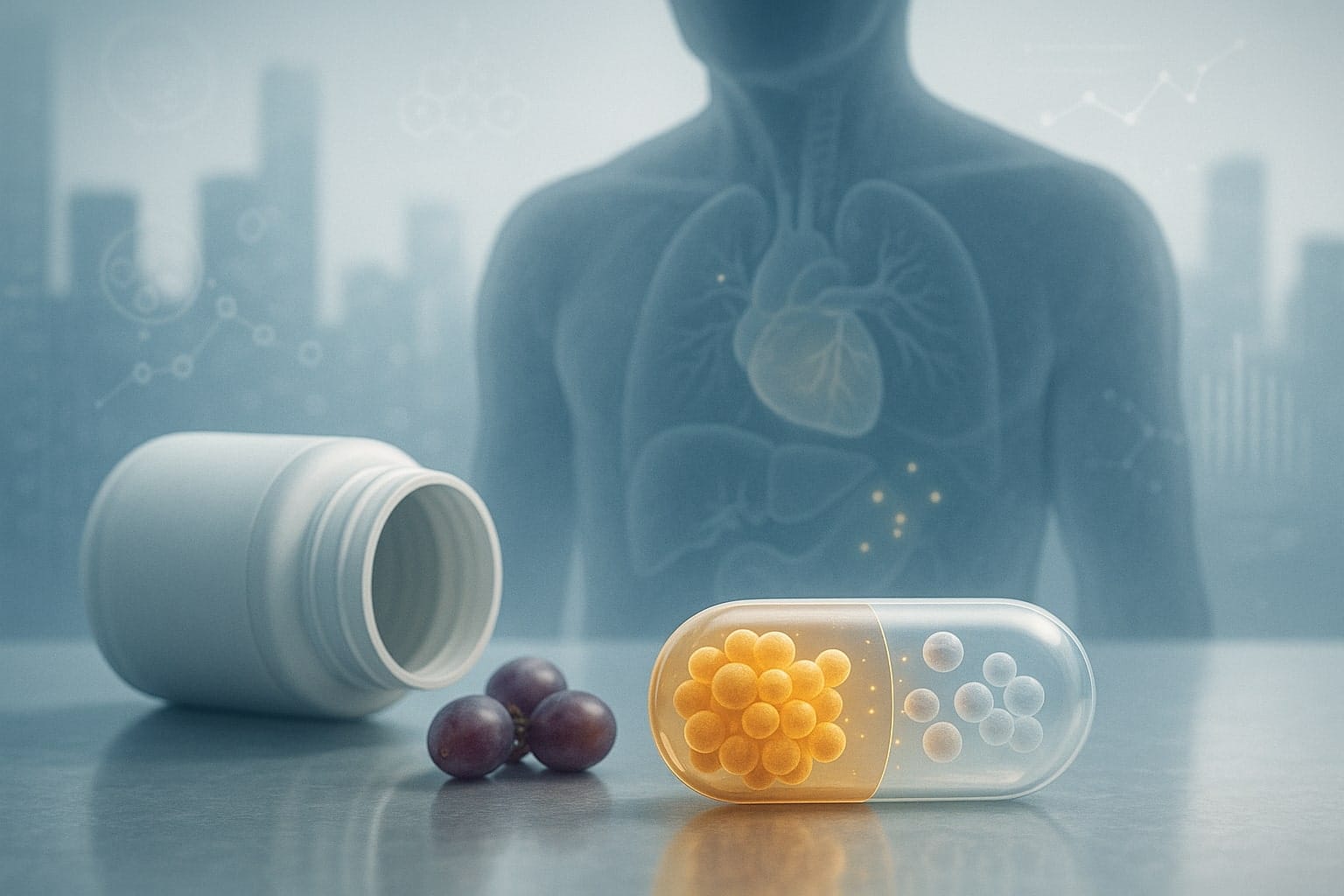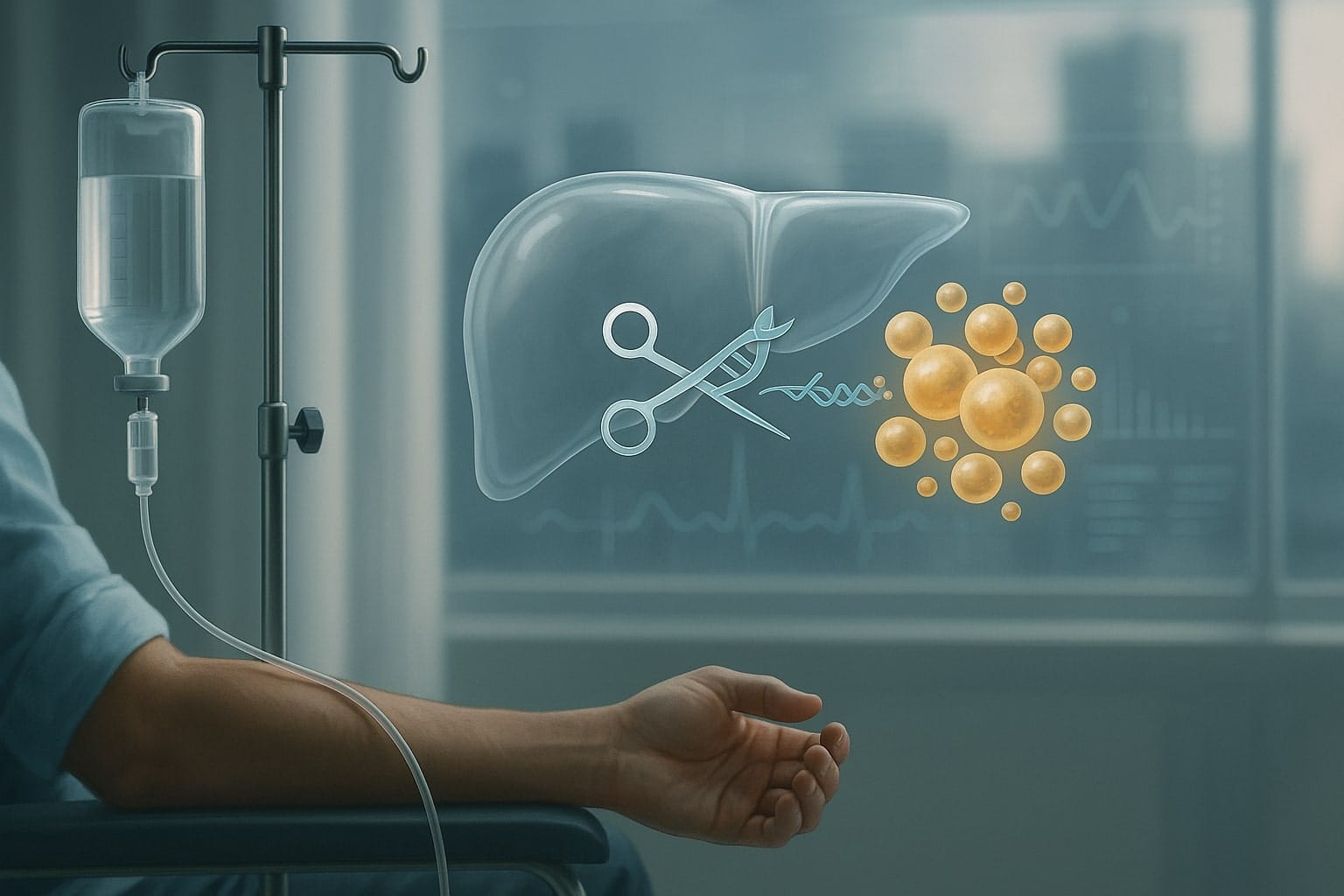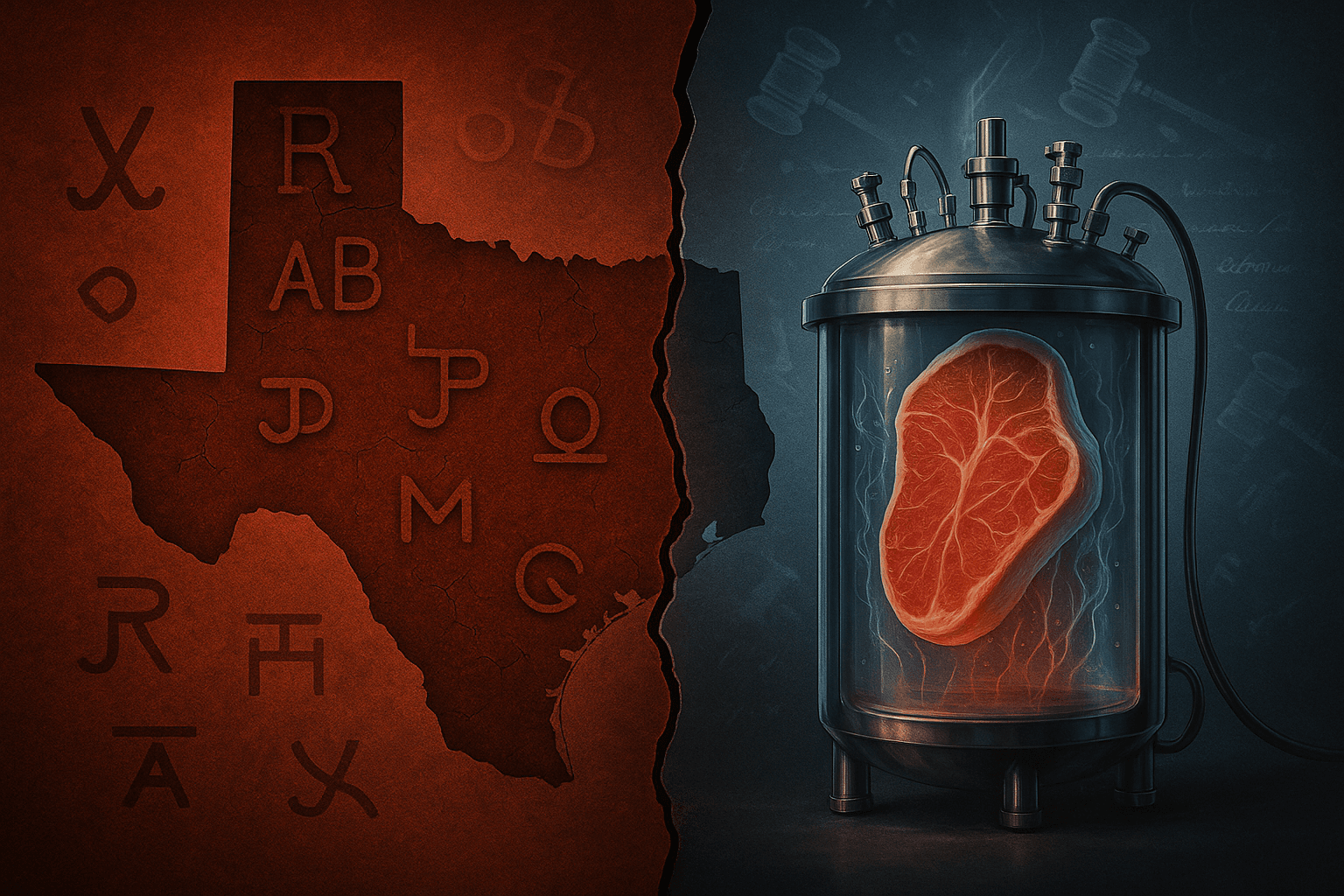High cholesterol has long been a silent threat lurking in the bloodstream. For millions of people, especially those with familial hypercholesterolemia, keeping “bad” LDL cholesterol in check means a lifetime of daily statin pills or frequent injections. Yet many patients still don’t hit their target LDL levels – whether due to medication adherence challenges or stubborn genetics. This leaves them at elevated risk of heart attacks and strokes, despite existing therapies. But what if a single treatment could permanently lower your cholesterol, freeing you from the treadmill of continuous medication?
That futuristic scenario is edging closer to reality. In a recent clinical trial called Heart-2, Boston-based biotech Verve Therapeutics tested a one-time gene-editing therapy designed to slash LDL cholesterol for good. The early results are eye-catching: a single infusion of the experimental treatment (known as VERVE-102) led to LDL-C reductions averaging over 50% in high-dose patients, with no serious side effects reported. The notion of a “one and done” cure for high cholesterol – something that kills the problem at its genetic root – has leapt from science fiction to the clinical realm.

In this feature, we delve into the technology behind Verve’s therapy (base editing targeting the PCSK9 gene and delivered via lipid nanoparticles), dissect the new Heart-2 trial data in detail, and examine how this approach stacks up against today’s cholesterol-lowering mainstays like statins and PCSK9 inhibitors. We’ll also hear from experts – leading cardiologists and biotech analysts – about the promise and pitfalls of editing genes to treat common diseases. Finally, we’ll consider the market implications for Verve (including a big decision looming from pharma partner Eli Lilly) and the regulatory and ethical landscape as this paradigm-shifting therapy navigates toward broader trials and, potentially, FDA approval.
The stakes are high. Cardiovascular disease remains the #1 global killer, and LDL cholesterol is a chief culprit. A therapy that reliably delivers lifelong LDL reduction with a single dose could revolutionize heart disease prevention. But pioneering a new medical era comes with big questions: Can gene editing be as safe and durable as we hope? How will it compare in cost and practicality to existing treatments? And are we ready, as a society and regulatory system, to embrace genetic cures for chronic conditions? The story of Verve’s Heart-2 trial offers a fascinating glimpse into a possible future of cardiovascular care – one that’s equal parts exciting and thought-provoking.
Table of Contents
ToggleFrom PCSK9 to Base Editing: How Verve’s One-Time Therapy Works
To understand Verve’s approach, it helps to know a bit about PCSK9, the gene at the center of this therapy. PCSK9 encodes a protein that plays a key role in cholesterol metabolism: it tags LDL receptors in the liver for destruction, which in turn limits the liver’s ability to remove LDL cholesterol from the blood. In essence, more PCSK9 means fewer LDL receptors and higher LDL cholesterol levels. This was confirmed in human genetics – rare individuals born with PCSK9 mutations that disable the gene have very low LDL levels and enjoy a dramatically reduced risk of heart disease, all without apparent health downsides. This discovery made PCSK9 one of the hottest targets in cardiology drug development.
Enter Verve Therapeutics, which is developing a new kind of treatment that doesn’t just inhibit PCSK9 temporarily (as current drugs do) but permanently turns off the PCSK9 gene in a patient’s liver cells. The idea is straightforward: mimic the beneficial mutation that nature gave to those rare individuals, granting patients a lifelong reduction in LDL. Achieving that, however, requires cutting-edge genetic technology. Verve’s therapy, VERVE-102, is built on CRISPR base editing – a novel form of gene editing that can precisely change a single letter of DNA. Unlike the original CRISPR/Cas9 which makes double-strand cuts, base editing swaps out one DNA nucleotide for another without breaking the DNA strand, potentially reducing unintended damage. In VERVE-102, an adenine base editor enzyme is programmed (via a guide RNA) to seek out the PCSK9 gene in liver cells and modify it in a way that inactivates the gene. In simple terms, the edit introduces a tiny typo in the PCSK9 gene’s code, rendering it unable to produce the functional PCSK9 protein. Once that edit is made in enough liver cells, the liver should churn out fewer PCSK9 proteins, leaving more LDL receptors intact to clear cholesterol from the bloodstream.

Delivering a gene editor into the human body is no trivial task – you can’t just swallow a pill of CRISPR enzymes. Verve’s solution is a custom-built lipid nanoparticle (LNP), essentially a microscopic fat bubble, that can carry the messenger RNA instructions for the base editor and the guide RNA into liver cells. The LNP is coated with a special targeting molecule called GalNAc (N-acetylgalactosamine), which is known to home in on liver cells by binding to receptors like ASGPR on their surface. This GalNAc-LNP tech is similar to that used by some RNA interference drugs (like inclisiran) to deliver their payload selectively to the liver. In the case of VERVE-102, the patient receives one intravenous infusion of the nanoparticles (over about 2–4 hours). The LNPs circulate to the liver, enter hepatocytes, and release the mRNA and guide RNA. The patient’s cells then produce the base editor protein transiently, which makes the desired A-to-G base change at the PCSK9 gene locus, knocking out the gene’s activity.
Crucially, this approach does not involve any viral vectors or permanent implants – it’s a one-shot chemical delivery of genetic instructions. After doing its editing work, the base editor mRNA degrades within days and the LNPs are cleared; but the genetic alteration in the liver cells remains. If all goes well, the result is a liver genetically reprogrammed to keep LDL cholesterol low forever. Verve often describes it as a “single-course treatment” leading to “durable reduction” of disease-causing LDL. It’s essentially a gene therapy via gene editing. The company’s co-founder and CEO, Dr. Sekar Kathiresan (a cardiologist by background), has framed the mission in visionary terms: “one treatment dose potentially leading to a lifetime of LDL-C lowering”. After seven years of development, that bold vision is finally being put to the test in human trials.
The Heart-2 Trial: Early Results Show Dramatic LDL Drops
Verve’s latest study, dubbed Heart-2, is a Phase 1b clinical trial evaluating VERVE-102 in people with heterozygous familial hypercholesterolemia (HeFH) or with premature coronary artery disease requiring intensive LDL reduction. These are patients who, despite standard therapies, have dangerously high cholesterol (typically LDL ≥ 190 mg/dL in HeFH) and often face early heart problems. The trial is open-label (no placebo arm at this stage) and is primarily assessing safety/tolerability, with a secondary look at how much LDL and PCSK9 levels drop.
In April 2025, Verve announced initial data from 14 patients treated across three dosing groups in Heart-2. All patients had at least 28 days of follow-up at the time of analysis. The results so far are highly encouraging. Notably, there were no treatment-related serious adverse events reported among these patients. In fact, investigators did not observe any dose-limiting toxicities, no liver enzyme elevations of concern, no platelet drops, and no cardiovascular events post-treatment. The only hiccup was a single grade 2 infusion-related reaction (a temporary reaction during the IV infusion) in one patient, which quickly resolved with acetaminophen. In short, the safety profile looks clean so far, which is a crucial point for a first-in-class gene editing therapy. “We are pleased by the safety VERVE-102 has demonstrated so far, and our proprietary GalNAc-LNP delivery technology is showing a potentially best-in-class safety profile,” Dr. Kathiresan remarked, noting that no dose-dependent side effects have emerged. Independent analysts also flagged the absence of adverse signals — “clean” was the term used in investor notes — as a big positive.
On the efficacy front, the data show dose-dependent cholesterol lowering, just as hoped. Patients received one of three doses: 0.3 mg/kg, 0.45 mg/kg, or 0.6 mg/kg (these doses refer to the amount of total RNA delivered, i.e. the mRNA + gRNA content of the infusion, scaled by body weight). At the lowest dose (0.3 mg/kg), LDL cholesterol was reduced by about 21% on average. At the mid dose (0.45 mg/kg), LDL was cut by roughly 41% on average. And in the highest dose group (0.6 mg/kg), patients saw an average LDL-C reduction of 53%, with one patient achieving a remarkable 69% drop in LDL. This 69% reduction approaches the kind of LDL lowering we typically only see with combinations of high-intensity statins and injectable drugs – an impressive feat for a single-treatment experimental therapy. It’s worth emphasizing that these percentages represent time-averaged reductions from baseline between 1 and 2 months after the dose, meaning the effect was maintained across multiple weeks of follow-up. All patients in the top-dose cohort had at least a 50% LDL reduction at last measurement.
Such LDL declines are mirrored by reductions in blood PCSK9 protein levels (as expected, since the gene is being turned off). At 0.6 mg/kg, PCSK9 levels dropped ~60%, compared to ~46% at the low dose. The correlation between RNA dose and LDL lowering was clearly evident – in fact, Verve highlighted total RNA dose (in mg) as a key driver of the pharmacodynamic response. Among participants who received ≥50 mg of total RNA (which in practice were those in the high-dose group, averaging ~55 mg total), the mean LDL-C reduction was 59%. In other words, once the dose crossed a certain threshold, patients consistently achieved roughly 60% lowering of LDL, a level comparable to the most potent cholesterol therapies available today. Figure 1 below illustrates the LDL reductions observed at different dose levels of VERVE-102 in the Heart-2 trial.
It’s still early days, but these numbers suggest that VERVE-102 can rival or exceed the potency of existing LDL-lowering drugs. For context, the leading PCSK9 inhibitor injections on the market (monoclonal antibodies such as Repatha and Praluent) typically reduce LDL by about 50–60% on top of statin therapy. And the newer PCSK9-targeted siRNA shot Leqvio (inclisiran) lowers LDL by roughly 45–50% and is given twice per year. In fact, analysts from William Blair noted that in HeFH patients, the ~53% mean LDL reduction seen at VERVE-102’s highest dose “numerically [beats] the LDL-C lowering bar” set by Leqvio (which showed ~39.7% LDL lowering in a comparable HeFH population). While cross-trial comparisons have caveats, it’s encouraging that even in this small Phase 1b study, gene editing is already matching or surpassing the efficacy of approved therapies.
Perhaps the most exciting aspect is the potential durability. Unlike other treatments which wane if not dosed repeatedly, a genetic edit should be long-lasting. Dr. Eugene Braunwald – a renowned cardiologist and Harvard professor who is often called the father of modern cardiology – highlighted the implications: “These initial Heart-2 data…suggest the potential for a new era of treatment where a single dose might lead to lifelong control of LDL-C.” He noted that adherence is a huge Achilles heel for current regimens: “With existing treatments, approximately half of patients discontinue their prescribed lipid-lowering therapy within one year”, he said, which leads to poor real-world outcomes. Braunwald, who serves on Verve’s scientific advisory board, sees one-shot gene editing as a chance to “move from daily pills or intermittent injections over decades to a one-dose future” for sustained cholesterol lowering.
To be clear, the Heart-2 trial is still in an early phase. These results cover the first 3 dose cohorts; a fourth, higher-dose cohort (0.7 mg/kg) is currently underway in the UK, Canada, Israel, Australia, and New Zealand. As of early April 2025, a couple of patients have received that dose with no red flags so far. By the second half of 2025, Verve expects to have final dose-escalation data, including longer follow-up to examine how durable the LDL reduction is over time. That will be a pivotal moment – confirming that the effect doesn’t fade and that no late safety issues emerge. If all goes well, the company plans to move swiftly into a Phase 2 trial by late 2025. The path ahead (Phase 2, then larger Phase 3 trials) will determine if this experimental therapy can truly deliver on its promise in a broader population. But at least for now, the one-time gene edit approach appears to be doing exactly what it was designed to do: safely and significantly lowering LDL in humans.
How Does It Compare to Statins and PCSK9 Inhibitors?
Whenever a flashy new therapy comes along, a key question is how it stacks up against the standard of care. In the case of high cholesterol, the standards of care are well-established: statins (like atorvastatin and rosuvastatin) have been the cornerstone since the 1980s, often complemented by ezetimibe or newer agents for tougher cases. Over the past decade, PCSK9 inhibitors – notably the antibodies Repatha (evolocumab) and Praluent (alirocumab) – emerged as powerful add-ons for patients with familial hypercholesterolemia or those who can’t tolerate statins. More recently, inclisiran (Leqvio), a small-interfering RNA therapy, offers twice-yearly injections to knock down PCSK9 levels. Each of these options has its pros and cons in terms of efficacy, convenience, and cost.
Let’s break down the comparison on three fronts: efficacy (how much LDL is lowered), delivery burden (how the therapy is given and how often), and cost. The table below summarizes these factors for Verve’s gene-editing therapy versus the main existing treatments:

Looking at efficacy, VERVE-102’s cholesterol-lowering effect (so far ~50% or more reduction in LDL) puts it in the same league as the best existing therapies. High-intensity statins can drop LDL by about 50% at maximal doses, and PCSK9 inhibitors similarly yield 50–60% reductions on average. Inclisiran’s effect is slightly less potent in some groups (~45–50%). Verve’s data at 0.6 mg/kg showed a 53% mean reduction, which is right on target. With a higher dose (0.7 mg/kg) being tested, it’s conceivable the average LDL reduction might climb further, perhaps into the 60% range. In any case, what’s striking is that a single infusion can achieve an effect comparable to taking a statin pill every day or getting injections every few weeks. Dr. Kathiresan noted in the press release that the early efficacy “suggests VERVE-102 has the potential to match or exceed the LDL-C reduction provided by currently available PCSK9-targeting therapies”. It’s a bold claim that will need confirmation in larger trials, but not an unrealistic one based on the Phase 1b data.
In terms of delivery and patient burden, the contrast is huge. Statins are easy to take (just a pill), but adherence drops off over time – people forget or stop taking them due to side effects like muscle pain. PCSK9 monoclonal antibodies require injections every 2-4 weeks, which is an inconvenience (though some patients self-administer at home), and the idea of chronic injections can deter people. Inclisiran cut down the frequency to one shot every 6 months, which is a big improvement in convenience; early surveys suggest patients prefer that infrequent dosing. Verve’s solution leaps to the extreme end of convenience: one and done. Receive an IV infusion one afternoon, and theoretically you’re set for life. There’s no smaller burden than no ongoing treatment at all. Of course, an IV infusion (2-4 hours in a clinic) is more involved up-front than swallowing a pill, and the patient may need monitoring afterwards. But after that single session, there’s nothing else to remember or do, which could solve the pervasive adherence problem Braunwald highlighted.
The flip side of a one-time irreversible treatment is the permanence – once you edit someone’s genome, you can’t easily undo it. With statins or injections, if a patient has an adverse reaction, you simply stop the drug and the effect wanes. With gene editing, safety has to be virtually ironclad from the start because the changes persist. That’s why demonstrating a lack of off-target effects or other toxicity is so critical in these trials. So far, Verve’s data give some confidence: the absence of liver enzyme elevations or platelet issues in Heart-2 is reassuring, especially given that Verve’s earlier version of the drug (VERVE-101) did encounter a setback with some transient thrombocytopenia (low platelets) in one patient. The company attributed that to the older LNP formulation and moved to the current GalNAc-LNP for VERVE-102, which appears to have resolved the problem. Nonetheless, caution is warranted until larger numbers of patients are treated and followed for longer durations.
Finally, let’s talk cost and access. Statins are inexpensive – most are generic, costing pennies a day – which is why they’re prescribed to tens of millions. PCSK9 antibodies initially launched around $14,000 per year, but after pushback, manufacturers slashed the list price to roughly $5,850/year in the U.S. (even less in some markets). Insurers still often restrict them to high-risk patients because even at ~$6k annually, it’s costly for chronic therapy. Inclisiran has a list price of about $3,250 per dose in the U.S. (roughly $6,500/year after the first year’s loading doses). Health economists (like those at ICER) have suggested that PCSK9 therapies become cost-effective around the $3,600–$6,000/year range for very high-risk patients. What about a one-shot gene cure? There’s no precedent in cholesterol, but gene therapies for other conditions often carry six or even seven-figure price tags up-front. For instance, one-time treatments for rare diseases (like Zolgensma for spinal muscular atrophy) cost over $2 million. Verve-102, if approved, would likely be very expensive initially – perhaps hundreds of thousands of dollars for a single infusion – given the high development cost and the potentially huge benefit of a lifelong fix. However, from a health economics view, if that single treatment obviates the need for decades of drugs (imagine a 30-year-old FH patient who would otherwise take pricey meds for 40+ years), a six-figure one-time cost could still be justified or even end up saving money in the long run. Much will depend on how payers and manufacturers strike the balance. It’s conceivable that the therapy could be priced akin to, say, 10–15 years worth of a PCSK9 inhibitor. But at this point, cost is speculative – an “unknown” as noted in the table – and will remain so until the therapy is closer to market. What is clear is that Verve’s gene editing approach is targeted at severe and high-risk patients first, where the cost-benefit equation is most favorable. Over time, if proven ultra-safe, one could imagine broader use, but that raises tough questions about how to pay for a treatment that potentially millions might benefit from.

Voices from the Field: Cautious Optimism and Next Questions
The unveiling of Verve’s early data has drawn both excitement and measured caution from experts in cardiology and genetics. On the enthusiastic side, many see this as a proof of concept that decades of genetics research are finally translating into game-changing therapies. Dr. Eugene Braunwald, as mentioned, spoke of a “new era” where patients could get “lifelong control of LDL-C” with a single dose, something that could dramatically improve long-term adherence and outcomes. Other cardiologists have noted that if the effect holds up, gene editing could bypass issues of patient compliance that plague current approaches – an especially big deal in preventive medicine where consistency is key. For patients with familial hypercholesterolemia, who often start battling cholesterol in childhood and suffer heart attacks in their 40s or 50s, a one-time treatment could be life-altering.
At the same time, specialists caution that larger trials are needed to truly assess safety and efficacy. Dr. Kiran Musunuru, a cardiologist-geneticist (and incidentally a co-founder of Verve, though not involved in day-to-day now), has previously pointed out that while the concept is powerful, regulators will want to see robust evidence that the gene editing doesn’t have off-target effects or long-term consequences like liver damage or unforeseen interactions. There’s also the question of differentiating this therapy’s benefits in an era when we already have pretty good drugs. Statins and PCSK9 inhibitors have solid data showing not just LDL lowering but actual reduction in heart attacks, strokes, and mortality in high-risk patients. By contrast, a novel therapy like VERVE-102 will likely be approved (if it is) based on LDL lowering as a surrogate endpoint, because it would take many years to directly show fewer heart attacks. The FDA does recognize LDL reduction in FH patients as a valid surrogate for approval, which is fortunate – otherwise a trial would need to follow patients for perhaps a decade. Still, the bar for safety will be set high precisely because these patients are otherwise treatable. If a gene editor caused a serious adverse event in a trial, it could set the field back significantly.
Biotech analysts who follow Verve are quite bullish but also realistic about timelines. Wall Street reaction to the Heart-2 data was strongly positive – Verve’s stock jumped over 25% in a single day on the news (in fact, it opened up as much as 45% that morning, reflecting optimism about the drug’s prospects and relief that safety looked good). Analysts at William Blair and BMO Capital noted the “wide therapeutic index” suggested by the lack of dose-dependent toxicity. They also positioned VERVE-102’s success as potentially disruptive to competitors like Novartis’s Leqvio and Merck’s oral PCSK9 inhibitor in development (MK-0616). Some even framed it as a showdown in the making: Verve’s one-time editor vs. Novartis’s twice-yearly shot vs. Merck’s daily pill, all vying to solve the same problem. Each has different strengths – for instance, Merck’s oral drug (if approved) would be easy to take but might require strict dosing with food considerations, whereas Verve’s is one-and-done but involves a procedure and irreversible changes. From a market perspective, if gene editing proves safe, it could capture a slice of patients who want “the cure”. But it might also expand the pie, as physicians become more aggressive in treating genetic cholesterol problems knowing non-adherence can be solved biologically.
One looming question is how regulators like the FDA will view this therapy as it advances. Notably, the FDA had initially been cautious – Verve’s first trial (Heart-1 with VERVE-101) was done overseas and was paused after some lab abnormalities. The company did not have U.S. authorization to run trials until they switched to VERVE-102. However, that has changed: in early 2025, the FDA cleared Verve’s IND (Investigational New Drug application) for VERVE-102, and even granted it Fast Track designation. This indicates the FDA is now comfortable with the updated approach and sees the potential. Fast Track status is meant to expedite the development and review of drugs for serious conditions with unmet needs. So as of now, Verve plans to include U.S. sites in the Phase 2 trial slated to start in late 2025. The Phase 2 will likely be a dose-confirmation study in a larger group, possibly still focusing on HeFH/premature ASCVD patients. If that goes well, a pivotal Phase 3 trial could start perhaps in 2026. An optimistic timeline might see approval by 2027 or 2028 for the FH indication. Verve has stated they have enough funding to get through Phase 2 (into mid-2027), which shows they are gearing up for a multi-year journey.
Another important aspect is Verve’s partnership with Eli Lilly & Co.. Back in 2023, Lilly struck a $60 million deal giving it an “opt-in” right to co-develop and commercialize Verve’s PCSK9 program after Phase 1. Essentially, once the Phase 1 data are in hand, Lilly can choose to pay more and jump in as a partner (sharing costs 33% and profits 50/50 in the U.S., per the agreement). That decision is expected in the second half of 2025. The Heart-2 results will heavily influence Lilly’s call. Given the encouraging data, many observers expect Lilly to opt in – it would give Lilly a pioneering asset in cardiovascular disease, a field they know well, and leverage their resources for Phase 3 and marketing. If Lilly says no, it might imply some concerns or a strategic shift, but that seems less likely with such positive momentum. On the flip side, Verve already faced disappointment when another big partner, Vertex Pharmaceuticals, walked away in early 2024 from a separate collaboration (which had been a $400M deal). Vertex’s move was speculated to be due to shifting priorities (Vertex is more focused on gene editing for other diseases like sickle cell and diabetes) rather than a knock on Verve’s tech per se, but it did underscore the uncertainties inherent in this field. For now, Verve remains a small company taking on a huge challenge, and having Lilly in its corner (or not) will influence investor confidence and the ability to scale up trials.

The Promise and Challenge of One-Shot Gene Editing for Common Diseases
Verve’s cholesterol-cutting therapy is part of a bigger story unfolding in medicine – the expansion of genome editing from rare disorders to common diseases. Until recently, gene therapies and CRISPR trials mostly focused on rare, monogenic illnesses (the likes of spinal muscular atrophy, inherited blindness, sickle cell anemia) where a one-time fix made obvious sense and there were few existing treatments. High cholesterol and atherosclerosis, by contrast, are incredibly common and have a whole armamentarium of drugs. Using gene editing here is a bold pioneer effort, raising both optimism and debate about how far to take such strategies.
On the optimistic side, if gene editing can safely turn off a bad-actor gene like PCSK9, why not deploy it against other major disease drivers? Imagine a single infusion to permanently lower blood pressure by editing a salt-handling gene in the kidney, or to cure diabetes by editing certain metabolic regulators. It’s a tantalizing prospect: one-time treatments for chronic diseases could alleviate the daily burden on patients and potentially improve outcomes by eliminating adherence issues. In cardiovascular medicine specifically, there are a few other genetic targets akin to PCSK9 that researchers are eyeing. Verve itself has programs for ANGPTL3 (another liver protein that affects LDL and triglycerides) and Lp(a) (lipoprotein(a), a hereditary cardiovascular risk factor) in preclinical development. Other companies like Intellia Therapeutics are also exploring in vivo CRISPR editing for conditions like hypercholesterolemia – Intellia has talked about programs targeting PCSK9 and ANGPTL3 as well (using a CRISPR/Cas9 approach rather than base editing). The initial success of Verve-102 could open the floodgates for more trials in “big” diseases, not just rare genetic syndromes.
However, the challenges are substantial. Safety remains the paramount concern. The liver is a convenient target (it’s relatively easy to get particles delivered there, and it can regenerate to an extent), but even so, unexpected immune reactions or off-target edits could occur. We must remember that editing billions of cells in a live human is vastly more complex than in a lab dish. There is also the question of long-term effects: turning off PCSK9 might have some subtle long-term consequences we haven’t imagined, especially if done at a young age. PCSK9 is expressed mainly in the liver, but it’s not impossible that it has other roles (some research hints it might influence inflammation or other pathways). While individuals born without PCSK9 are fine, editing an adult’s cells might not perfectly recapitulate the congenital absence. Thus, life-long monitoring of those treated with gene editing will be essential, and regulatory agencies will likely require long post-approval follow-up studies.
Another challenge is ethical and practical: who should get such a therapy? Initially, it will be people with severe hereditary risk, like FH patients who, despite everything, can’t get their LDL down. That makes sense. But what if someday data suggest that even an average person at moderate risk could benefit from a gene edit to prevent heart disease? Treating a broad swath of otherwise healthy individuals preventively would raise different cost-benefit questions and ethical considerations about altering genomes at scale. We’re some ways off from that scenario, but it’s not inconceivable in the long run if the technology proves ultra-safe and cost-effective. For now, the focus is appropriately on those with the most to gain and the least to lose (medically speaking) – patients with familial hypercholesterolemia or early heart disease who are not well-controlled by available therapies.
Finally, cost and access disparities could become a story. If a one-time cure exists but is extremely expensive, how do we ensure it reaches those who need it, rather than becoming an elite treatment? This is a familiar refrain with gene therapies for rare diseases, which often rely on special reimbursement models and funds. For a widespread condition like high cholesterol, payers might push back hard or demand outcomes-based pricing (e.g. payments spread over years and contingent on continued LDL reduction). It will be interesting to see new payment paradigms develop if one-time treatments for chronic conditions come to market.
In sum, Verve’s Heart-2 trial is more than just another biotech data release – it’s a milestone in the convergence of genetics and cardiology. The notion that a heart disease risk factor can be permanently tamed by rewriting DNA is a powerful one, loaded with hope for patients who live in fear of premature heart attacks. As Dr. Kathiresan put it, his company’s mission is to “revolutionize cardiovascular disease treatment and deliver a one dose future.” There is still a lot to prove before that future arrives: larger trials, regulatory green lights, and real-world evidence of sustained benefit. But with each patient treated in Heart-2 and (soon) Phase 2, we inch closer to answering a profound question: Can we edit our way out of heart disease?
For now, the answer appears to be a tentative yes – backed by low LDL levels and healthy trial participants – tempered with the understanding that science rarely advances in a straight line. It’s a moment to savor for those who’ve championed gene editing technology, and a moment to engage in serious discussion about how to harness it responsibly. Years from now, we may look back on this trial the way we recall the first statin trials of the 1980s – as the start of a new chapter in fighting the world’s leading killer. One dose, a lifetime of benefit: it seemed like a far-fetched dream, but in a small group of volunteers, that dream is starting to materialize on lab reports and blood test results. And that has set the entire biomedical community abuzz with anticipation.

